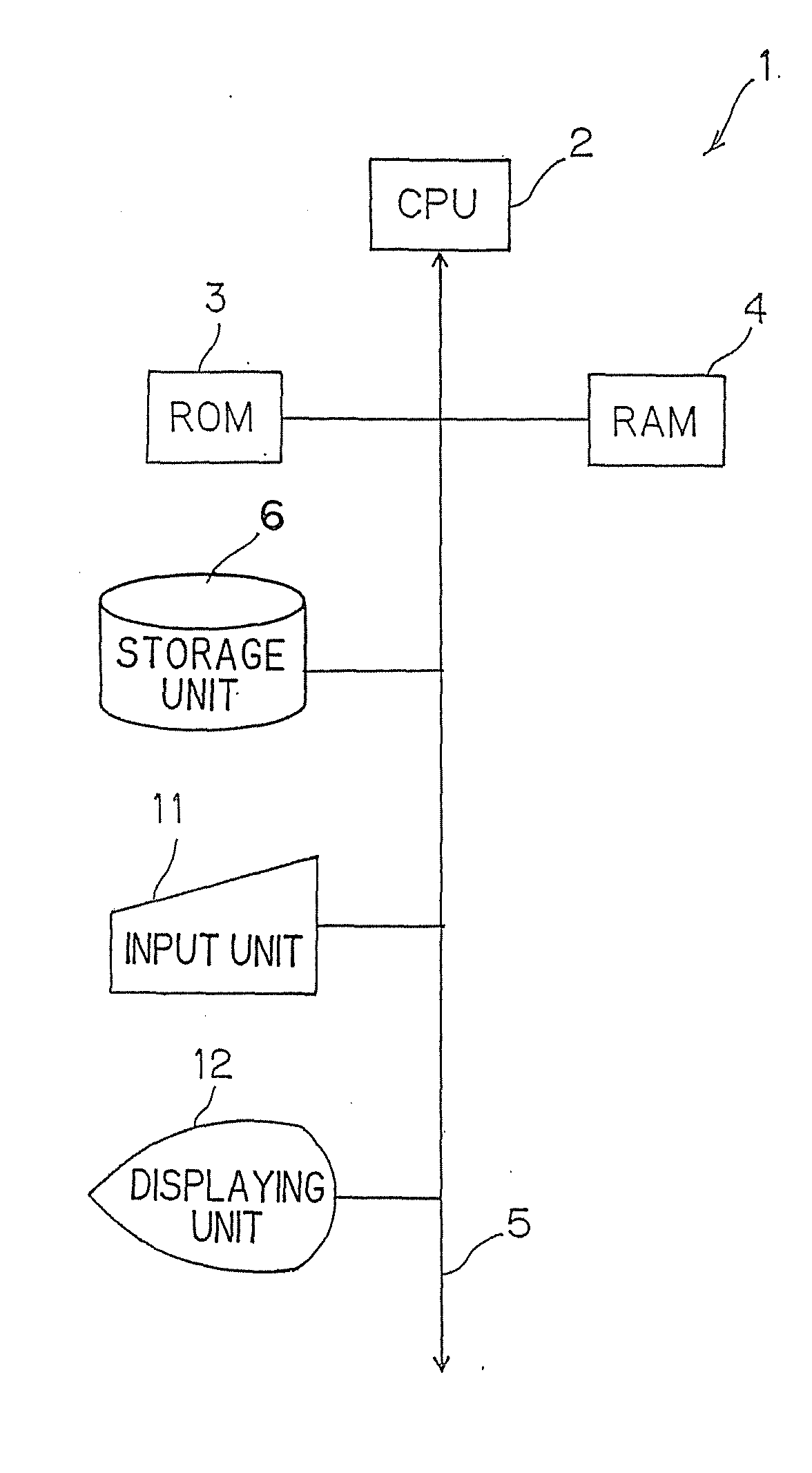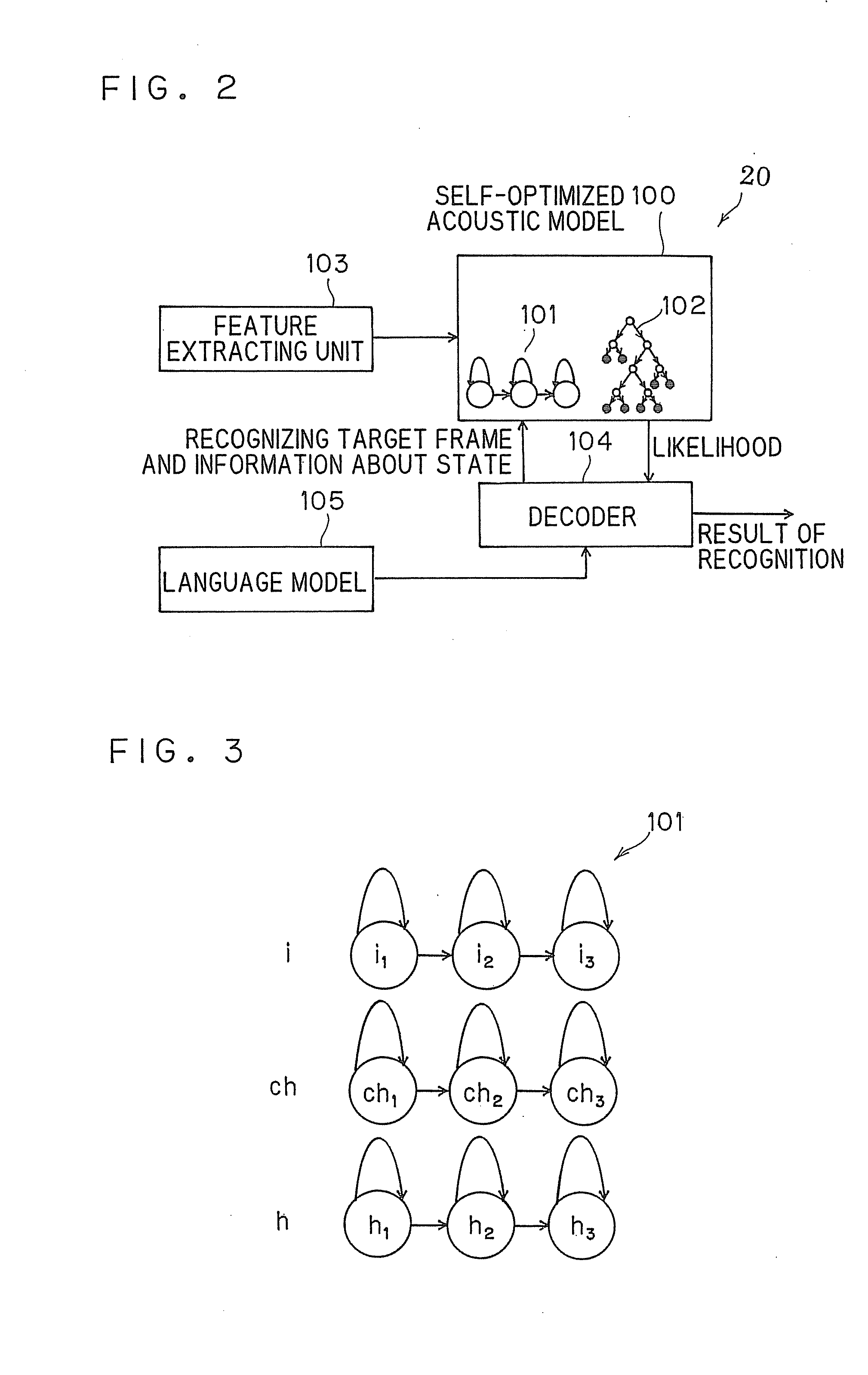Speaker adaptation apparatus and program thereof
a technology for adapting speakers and speakers, applied in the field of speaker adaptation, can solve problems such as performance deterioration depending on speakers
- Summary
- Abstract
- Description
- Claims
- Application Information
AI Technical Summary
Benefits of technology
Problems solved by technology
Method used
Image
Examples
first embodiment
[0026]Referring now to FIG. 1 to FIG. 10, a speech recognition apparatus 1 having a speaker adaptation apparatus according to a first embodiment of the invention will be descried.
[0027]FIG. 1 is a block diagram exemplifying a hardware configuration of the speech recognition apparatus 1 according to the first embodiment. The speech recognition apparatus 1 is configured roughly to perform a speech recognition process using a self-optimized acoustic model (hereinafter referred to as “acoustic model”), and the speaker adaptation apparatus is configured to perform speaker adaptation on the acoustic model.
[0028]As shown in FIG. 1, the speech recognition apparatus 1 is, for example, a computer, and includes a CPU 2 which is a principal portion of the computer and controls respective units. A ROM 3 and a RAM 4 are connected to the CPU 2 via a bus 5. A storage unit 6 configured to store various programs and data, an input unit 11 configured to issue various operation instructions, and a disp...
second embodiment
[0094]Referring now to FIG. 11, a speaker adaptation apparatus according to a second embodiment of the invention will be described.
[0095]In the speaker adaptation apparatus in the second embodiment, a speaker-independent decision tree 701 is created as in the first embodiment. Subsequently, a speaker-dependent decision tree 705 is created as in the first embodiment. The speaker-dependent decision tree 705 may be created as a decision tree which is completely new including the structure of the decision tree using a speaker adaptation data 704, or may be created by rewriting the parameters of the speaker-independent decision tree 701 according to the speaker adaptation data 704 as in the first embodiment.
[0096]The second embodiment is different from the first embodiment as follows.
[0097]In the first embodiment, parameters of the speaker-independent decision tree 601 and the speaker-dependent decision tree 605 are combined to create the speaker adaptation decision tree 608.
[0098]In con...
third embodiment
[0105]Referring now to FIG. 12 and FIG. 13, the speaker adaptation apparatus according to a third embodiment of the invention will be described.
[0106]The speaker adaptation apparatus in the third embodiment realizes the speaker adaptation by creating a specific speaker decision tree from a plurality of speaker-dependent decision trees 805 and combining the same, and adapts the acoustic model to the data of the speaker by combining both of the question parameter and the likelihood parameter of the speaker adaptation decision tree at the each node and the each leaf in a common weight.
[0107]Referring now to an explanatory drawing in FIG. 12 and a flowchart in FIG. 13, the speaker adapting method according to the third embodiment will be described.
[0108]In Step S901, the acquiring unit 100 creates a speaker-independent decision tree 801 as in the first embodiment.
[0109]In Step S902, as in the first embodiment, the acquiring unit 100 rewrites the parameter of the speaker-independent deci...
PUM
 Login to View More
Login to View More Abstract
Description
Claims
Application Information
 Login to View More
Login to View More - R&D
- Intellectual Property
- Life Sciences
- Materials
- Tech Scout
- Unparalleled Data Quality
- Higher Quality Content
- 60% Fewer Hallucinations
Browse by: Latest US Patents, China's latest patents, Technical Efficacy Thesaurus, Application Domain, Technology Topic, Popular Technical Reports.
© 2025 PatSnap. All rights reserved.Legal|Privacy policy|Modern Slavery Act Transparency Statement|Sitemap|About US| Contact US: help@patsnap.com



